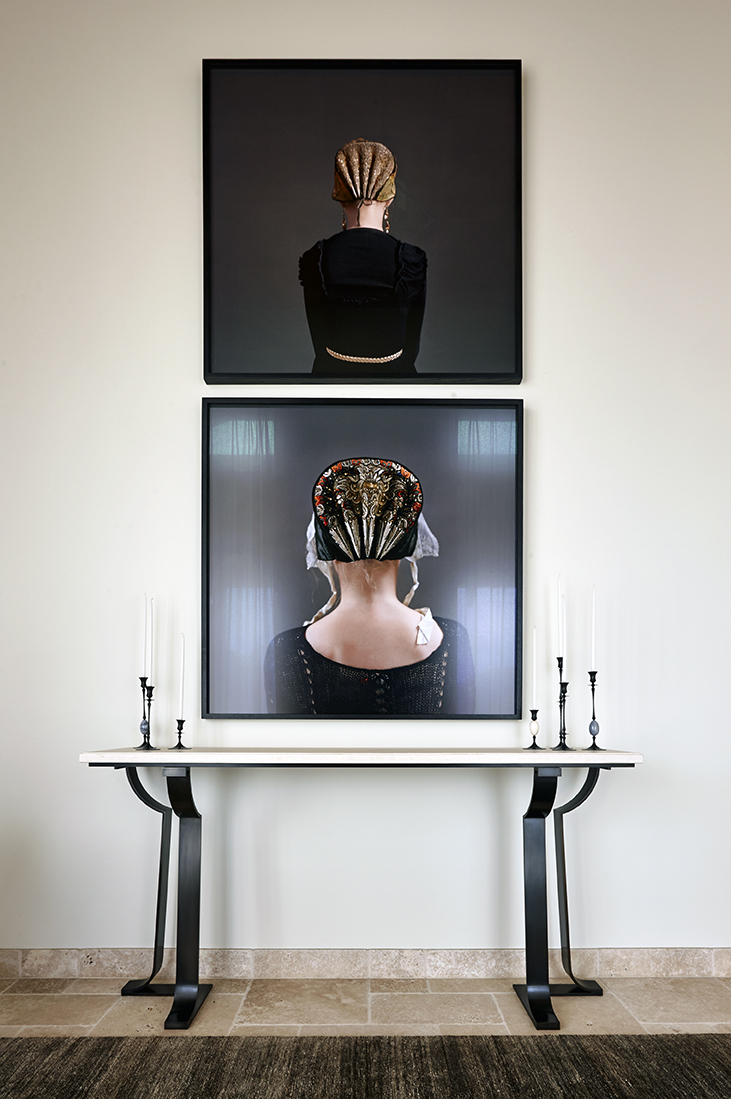Modern Interiors.
Why do we have a love/hate relationship with them?
Q&A with Ryan Hughes & Barbara Westbrook
Interview by Elizabeth Hanson • Photos by Philip Grossman
Modern interiors are less forgiving than traditional ones. When they’re well done, everyone thinks they’re cool, but it’s not an effortless task, much like fashion. There is usually less to see in a modern room, so the pieces have to relate to each other more perfectly than the layers of pieces in a traditional room. A bad modern space is more off-putting than a not-so-great traditional space because it is usually poorly edited. Like Coco Chanel said, “When accessorizing, always take off the last thing you put on.”
Do you have a preference - modern or traditional interiors? Which do you think you’re better at accomplishing?
RH: Growing up in the South with a mother in interior design and now owning a business in Atlanta, my heart will always be drawn to the more traditional designs of my mentors, colleagues, and friends in the South. However, as R HUGHES has developed into a destination for sourcing modern designs, this has influenced my current personal aesthetic. As I work on my new townhome in Morningside, I have found it more difficult to execute a modern interior with the same warmth and eclecticism of my previous, less modern home. The attention to scale, proportion, and palette has been challenging, but the process has been very rewarding.
BW: I love them both! I could never decide which is my favorite. How do you choose between a cast bronze Christian Liaigre chair upholstered in the perfect mohair fabric and an 18th century bergère upholstered in tattered blue-green tapestry? I usually just prefer the one I am in the room with at the time!
What piece should every modern interior have, be it an accessory, certain light fixture, or type of furniture?
RH: Every modern interior should have something old in it. The spaces we live in must tell a story and speak to the homeowner’s sense of self.
BW: I completely agree with Ryan. Every traditional home should have a little something sleek and every modern home should have a little something crusty.
What inspires you at the beginning of a project? Are you inspired differently for your modern interiors than your traditional ones?
BW: The architecture is always the starting point of a project whether modern or traditional. Sometimes there is a lack of architecture, so I know I’m going to have to make-up the deficit with the design if the architecture can’t be changed. The client’s personal style is also a critical starting point. During the whole process, I usually have a couple of words or a phrase in mind that describes what the interior should look like, so that my selections can be filtered through that vision.
Which modern furniture designs or designers do you admire the most and why?
RH: Christian Liaigre, Piet Boone, and Axel Vervoot, are some of my early design influences; however, I really admire Kara Mann, who was a major influence in the start of R HUGHES. Her namesake Chicago showroom showed me what Atlanta was missing and set the groundwork for what I wanted R HUGHES to become. I have since become a huge fan of her interiors (it’s also exciting to see many of my own vendors featured in her projects!)
BW: I was introduced to Jean Michel Frank when I worked for Charles Gandy back in 1988. Frank was a genius who was gone too soon. I have always considered Christian Liaigre, the Jean Michel Frank of our time. My client and I went back to his New York showroom three times when we were selecting furniture for her New Zealand house. It is absolutely stunning.
How do you keep non-traditional interiors from looking cold, sterile, and uninviting?
RH: Something living. Every space, whether modern or traditional needs life.
Also, how do you keep modern interiors from looking generic and unsophisticated?
RH: You simply cannot do a strong modern interior inexpensively. It requires fewer, but finer pieces.
What are the worst and most over-used mistakes or gimmicks in modern interiors? You can pick more than one!
RH: Low seat heights for everyday living…not practical and not necessarily modern either. Lacquer materials in high use areas (they look bad after a short period of time). Lucite and chrome.
BW: I have never understood accent walls and I still see them in modern interiors. I have to agree with Ryan again, low-slung seating is impractical. We placed a fun pair of low, linen sofas in a client’s condo and while she loves to lie on the sofa to watch TV, getting up from it is a challenge. Lesson learned!
~ W ~












